The title of the 18th architecture biennial “The Laboratory of the Future” and the choice of Ghanaian Lesley Naa Norle Lokko as curator, which indicated Africa as the laboratory of the future, have kindled hopes for a change of direction from the usual rhetorical and museum-making process that has characterized the Venice Biennale for years. Unfortunately this time too, as we had already seen in the 59th international art exhibition in 2022 curated by Cecilia Alemani, the sexual and ethnic identity of the curator does not in itself guarantee valid alternatives and innovative proposals capable of countering clientelistic and elitist politics pursued by the presidency. Lesley Lokko through a compromising approach with the exhibition policy of “art in the showcase” has given life to a narcissistic and abstract exhibition, refusing a discursive engagement with reality, thus losing the opportunity to use her leadership position in an active and purposeful way.

Kate Otten architects, Threads, Arsenale, photo by Efthalia Rentetzi
The exhibition itinerary of the current biennial as a whole offers a didactic reading and renounces to offer constructive alternatives and active points of view. It is mostly a collection of testimonies in favor of environmental protection translated into a great cry of despair for a planet that appears to be heading towards chaos after having freed itself from its inhabitants. The curatorship as a whole is undecided, not to say confused, resulting in often overlapping proposals. Participants are left to navigate by sight, entrusted mainly to the skills of individual curators. In contrast to Lokko’s curatorial weakness, we come across a series of dynamic works at a conceptual and design level, but also evidence of works created with care, thanks to the design, organizational and construction skills of well-known architectural studios from all over the world.
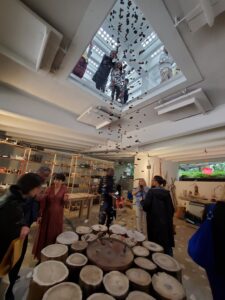
Architecture, a place to be loved, Padigione del Giappone, Giardini della Biennale, photo by Efthalia Rentetzi
The exhibition at the Giardini venue, which usually remains conditioned by national choices, offers few projects that manage to emerge from purely abstract and self-celebratory theses. A dynamic voice with an interactive intention comes from the German pavilion, but remains trapped within the limits of a static and repetitive protest. The pavilion of the Nordic countries disappoints, failing in its objective of offering a historical continuity of sustainable and environmentally friendly architecture, falling into folklore. Equally out of place is the attractive presence of the British pavilion which, despite the aesthetic quality of its content, struggles to align itself with the concept of the biennial and to offer the visitor valid interpretations. Instead, the Hungarian pavilion emerges with Reziduum – The Frequency of Architecture project, which, while presenting a concrete and successful museum example, avoids the celebratory effect by instead activating a dialectical relationship with the spectator. A positive note is offered by the Japanese pavilion with Conversation on architecture to love, which proposes an architecture capable of initiating a harmonious symbiosis between man and his environment, a space that invites you to discover a varied and multiform path and to try direct sensations. The curatorial team exploits the entire space of the pavilion by generating chromatic weaves and intense alternations of light and shadow in a joyful way.

Open for Maintenance, Padiglione della Germania, Giardini della Biennale, photo by Efthalia Rentetzi
In the Arsenale exhibition, despite the casual accumulation of the innumerable presences that struggle to build forms of symbiosis and exhibition solidarity, a series of works worthy of attention can be seen, among which we recall the conceptual and symbolic composition of the Chilean pavilion Moving Ecologies, characterized by a fragile refinement that refers to ecological protection and restoration. By bypassing piles of debris, reconstructions of gyms, flea markets and pop representations of supermarkets, the installation entitled Co-Living Courtyard, by the ZAO / standardarchitecture studio emerges. These are architectural projects conceived as projects of common and shared view, organic laboratories of coexistence and constructive dialogue with the host urban fabric. Different but equally interesting is the presence of the South African studio Kate Otten architects which exhibits the work Threads among the individual practitioners where the intimate relationship between the earth and its environmental context is narrated in a graceful and equally profound way. The South African pavilion with Moving Ecologies is also aligned with the concept of continuity between past, present and future, which develops in a tripartite sequence investigating the coexistence between architecture and the host soil in a historical, ethnographic, political and cultural key, proposing socio-spatial solutions taking into account climate change and economic and social diversities and inequalities.
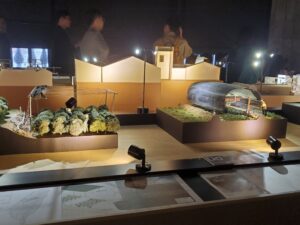
Diachronic Apparatuses of Taiwan, Architecture as on-going details within landscape, evento collaterale, Palazzo delle Prigioni, Venezia, photo by Efthalia Rentetzi
Among the many collateral events hosted inside Venetian palaces, museum structures but also in small improvised spaces scattered among the city’s streets, the vitality of the Taiwan pavilion is striking with Architecture as on-going details within landscape exhibited at Palazzo delle Prigioni. By successfully overcoming the small size of the exhibition space, the curating team manages to present a varied and multifaceted exhibition panorama focused on the restoration of the local fabric, bringing concrete examples such as the greenhouses in the Chianan plain, the tea plantations of Lishan, the shelters for oysters off the coast of Chiayi, examples that respectfully address the natural environment. The installation co-organized by: Hong Kong Arts Development Council and The Hong Kong Institute of Architects successfully reflects the peculiarity of Hong Kong which, conditioned by the small size of its territory, manages to transform itself in a continuous and creative way. Innovative solutions are presented through three contrasting scales that allude to territorial, architectural and single space transformations through a successful convivium willing to face the challenges of tomorrow.

Cave of Cloud, Tong Zhang, Tian-yi Min, Yun-hu Cao, Li-jun Zou, Yun-zhu Jl, Time Space Existence, Palazzo Bembo, photo by Efthalia Rentetzi
Interesting projects come from “independent” exhibitions and in particular from the European Cultural Center which, while refusing to queue up to receive access to collateral projects, managed to captain the biennial’s opening. Unlike the exhibition itinerary in Palazzo Mora, characterized by an organizational sloppiness and a casual combination of projects, the exhibition in Palazzo Bembo offers a successful itinerary, characterized by stylistic and organizational cohesion. We encounter a series of happy exhibition coexistence which, although expressed through different techniques, forms and materials, manage to activate dialectical relationships both among themselves and with visitors. The following stand out: the Dutch Julia Janssen with Mapping the Oblivion, who tries to make the challenges of our digitalizing society tangible from an artistic point of view; the sophisticated Chinese work Cave of Cloud full of symbolism and interpretative variety which investigates the mystical relationship between man and his habitat; the vital exhibition Layers by Louise Braverman rendered through the assembly of images and organic materials that generates a story with a light pop flavour. The American architect uses the metaphor of the tree and its roots that creep into the ground, alluding to the architectural identities which, interconnected over time, lead to awareness of the nuances present in society. Equally successful are the installations set up by the cultural center itself at the Marinaressa gardens, where different forms and materials share space, creating a climate of dialogue and contamination. The Japanese hut which recalls the tea house, is an organic, light structure which guarantees an intimate and private space which is at the same time welcoming thanks to the shapes of a flexible and breathing architecture.

Veneti-AnTeahouse, Mitsubishi Jisho Takaaki Fuji, Hiroya Inage,De Yuan Kang, Time Space Existence, Giardini Marinaressa, photo by Efthalia Rentetzi
Now the time has come to raise a series of issues that usually do not find expression in official criticism, starting with the invasion of the entire city which encourages the devastating real estate speculation already present in Venice. Despite the pervasiveness of the biennial in the fabric of the city, any involvement of the residents is excluded, who could have had an active participation starting from the schools. The only exception is the participation of the IUAV University thanks to the management of its professors who have always collaborated with the leaders of the political apparatus. The strategies in favor of the financial market that manages the art market, using the biennial as a showcase, are now consolidated and further strengthened. Cooperatives and small studios of independent architects who can only find space at collateral exhibitions in exchange for a substantial financial contribution are excluded from the privileged aisles of the exhibition, thus fueling a parallel domain that could progressively influence and even take over the spaces of the biennial. It is the snake eating its tail, i.e. a political leadership complicit in the cultural, economic and cultural impoverishment of both the biennial institution and the city, with the former not willing to re-evaluate and share choices with active citizens.
Efthalia Rentetzi
Info:
www.labiennale.org/it/architettura/2023
www.ecc-italy.eu/exhibitions/2023archbiennial

is a contemporary art magazine since 1980


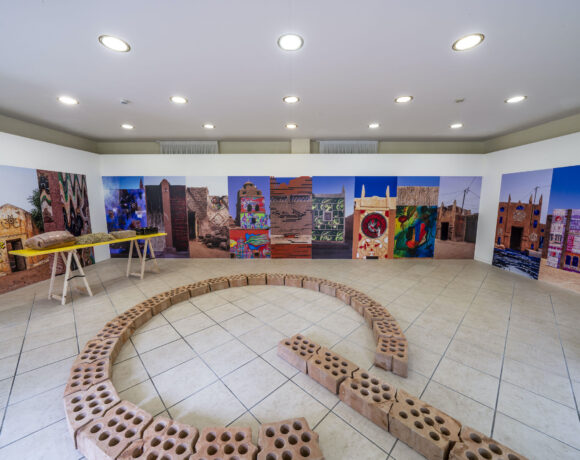
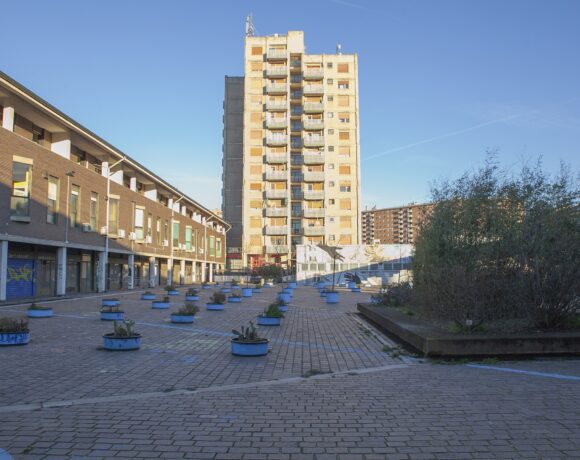
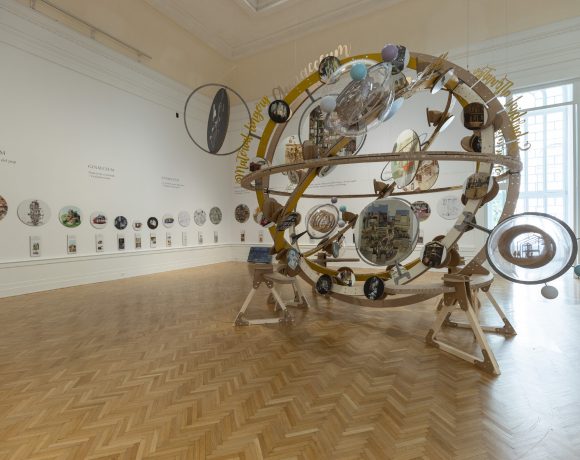

NO COMMENT